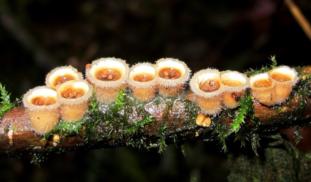Please wait...
About This Project
The Precautionary Group
About 17 million tons of sewage sludge are disposed in the US each year in our forests and on our farms. Sludge-borne toxins are bioassimilated into our foods, and sludge leachates enter our precious waters. We have detected a novel fungus that may detoxify sludge toxins, rendering the residual sludge materials safer and available for beneficial reuse. We intend to culture and identify the fungus as a first step to its commercial exploitation.
More Lab Notes From This Project

Browse Other Projects on Experiment
Related Projects
How do polar bears stay healthy on the world's worst diet?
Polar bears survive almost entirely on seal fat. Yet unlike humans who eat high-fat diets, polar bears never...
Uncovering hidden insect diversity associated with a likely undescribed gall-forming midge
Does a likely undescribed species of gall-forming midge (pers. comm. Ray Gagné) on Eriodictyon plants (Yerba...
Macrofungi of the California archipelago
The eight islands of the California Archipelago are a well-studied biodiversity hotspot — but we know almost...


